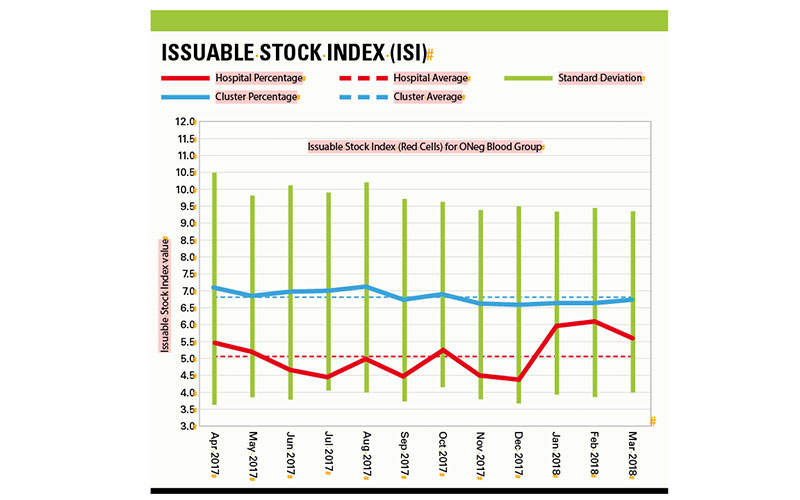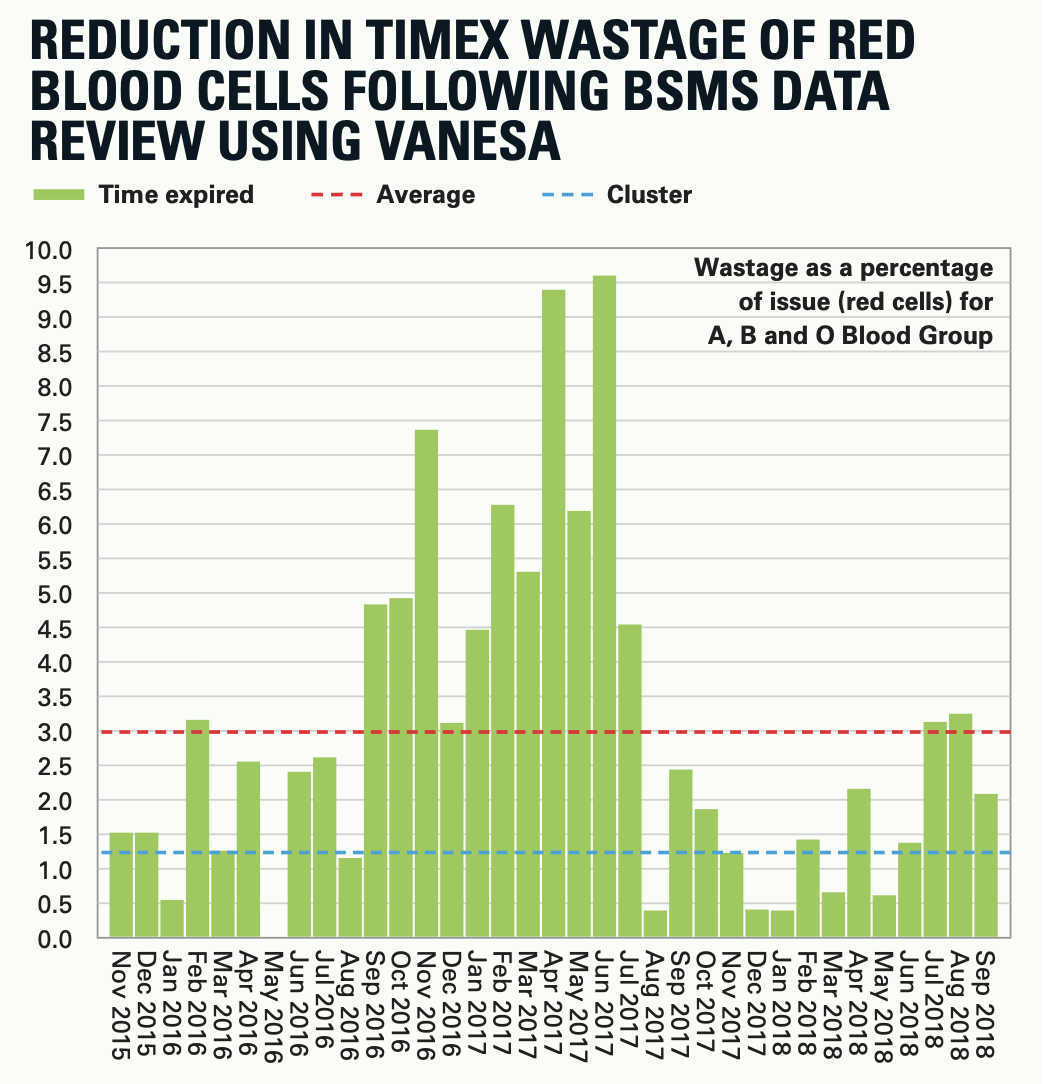Clare Denison and Fatts Chowdhury outline the Blood Stocks Management Scheme and explain how it can reduce wastage and save money.

The Blood Stocks Management Scheme (BSMS) was established in 2001 to understand and improve blood inventory management across the blood supply chain. Hospitals and blood services from England, Wales and Northern Ireland are currently participating in the scheme.
Central to the work is VANESA, a data management system, where hospital and blood service data is collected. In return, participants can view real-time data and charts. The BSMS has a large bank of data on the blood supply chain and detailed knowledge of its various elements.
Participation in the scheme is voluntary and open to all hospitals.
The BSMS collects data from a variety of sources and draws on this data to produce a number of regular and ad-hoc reports. These reports contain analysis and information regarding the various elements of the blood supply chain and inventory management.
Benchmarking
Hospitals that use VANESA can select appropriate categories based on their and other hospitals’ profiles to appropriately benchmark their data. This can be done by selecting the size of the hospital (based on their red blood cell (RBC) or platelet (PLT) usage category), their geographical location (based on the Regional Transfusion Committee (RTC)) or clinical specialities available within their hospital.
Once appropriate benchmarking categories have been selected within VANESA, users can view inbuilt tablesand charts to compare their data with similar hospitals.
Figure 1 (below) is an example of a line chart. This shows the selected users Issuable Stock Index (ISI) for O D Negative RBCs compared to other hospitals within the same benchmarking cluster.

ISI is a calculated field; it gives the user an idea of how much stock they are holding in terms of “days use”.
Case study
The NHS has been under huge financial pressures over recent years to provide effective clinical care with limited resources. Blood component wastage is an important financial issue for all hospitals.
To aid cost savings at St Mary’s Hospital, London, which houses specialties which are known to be high users of blood components, the causes and extent of blood wastage within the blood transfusion laboratory were analysed.
The aim was to implement interventions to minimise wastage without compromising patient care while following UK guidelines.
The purpose of the stock review with the BSMS team was to ensure blood stock ordering and stock management is undertaken to minimise wastage from time expiry of RBC units. This was achieved by reviewing the ordering of blood components against regular usage via the blood stock management scheme VANESA system, ensuring that ordering is peer-group-reviewed. This was then followed up with training for biomedical scientists in the transfusion laboratory on how to appropriately order blood components correctly to minimise time expiry wastage.
Previous work by the BSMS has shown a direct link between red cell time expiry wastage and amount of stock held and the age of that stock. Information obtained regarding units wasted due to being out of temperature was used for training targeted clinical teams.
Results
Comparing data after 10 weeks from implementing the change in stock levels with data for the same months from the previous two years shows a total fall of RBC stock of 42.25%. This equates to a reduction of 68 units in average daily stock holding, which is an £8,500 one-off saving. Revising daily stock ordering based on information from VANESA on the previous two years’ data resulted in a reduction of TIMEX units from an average of 43 units to 10 units monthly, which is a potential on-going saving that equates to more than £4,000 per month. Over the first year, savings of £56,500 were made with on-going cost savings of £48,000 per year. Effective blood stock management within the laboratory at St Mary’s Hospital has resulted in a reduction of time expired units and a cost saving of over £60,000.

Conclusion
There is a plethora of data held within VANESA that can assist biomedical scientists within hospital transfusion laboratories to review their own laboratories stock holding and amend this based on usage.
This can help to reduce wastage and inappropriate use and therefore create cost savings that can benefit not only the blood transfusion laboratory but also the wider NHS.
Clare Denison is Lead Specialist for the BSMS, based within NHS Blood and Transplant (NHSBT) and Fatts Chowdhury is a Consultant Haematologist with a joint post between NHSBT and Imperial College Healthcare NHS Trust.
For further information, visit bloodstocks.co.uk.
Picture credit | iStock




